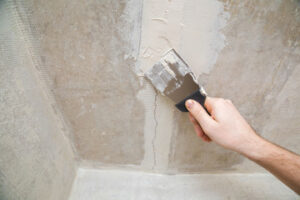Septic tank pumping services remove the sludge and scum layers that build up in your home’s septic system. This reduces your waste management costs and prevents clogs in the system, so you can use your drains effectively.

Cleaning and pumping rely on different service configurations. While cleaning offers a more limited scope focused only on the tank, pumping completely evacuates liquid effluent and solid sludge from every component of your septic system. Read on Septic Tank Pump Out Perth for more information.
When your septic tank is emptied, the wastewater it contains makes its way to your drain field, where it percolates through groundwater and undergoes natural treatment. But your septic tank pump, which is installed within the tank itself, can help the process move along more quickly. This pump propels effluent uphill to your drain field, overcoming elevation differences and keeping wastewater moving in the right direction.
As a result, your septic system will operate more efficiently and reduce the risk of backups and costly repairs. The best septic tank sewage pumps are built for longevity and robust performance, so they can stand up to the harsh conditions inside your tank. Look for durable materials like stainless steel and cast iron that resist corrosion, wear, and other environmental stresses. Durability also translates to higher efficiency and a longer lifespan for your pump.
There are several different types of septic tank sewage pumps to consider for your system, each with its own strengths and weaknesses. For example, if your system involves significant elevation changes, you’ll want a pump with high head pressure to lift wastewater over long distances. On the other hand, some systems rely on their septic tank pump to distribute wastewater evenly across a large area, and these types of setups typically require lower head pressure.
Another feature you may want to keep in mind is your septic tank pump’s power. Some residential systems can get away with a pump that has moderate power, while commercial systems typically need more robust equipment to handle larger waste loads and higher discharge rates.
Regardless of your needs, you’ll need a reliable septic tank sewage pump to ensure that your home’s wastewater is properly filtered and transported. By understanding the different types of septic tank pumps available and their key features, you’ll be able to make a more informed decision about which one will work best for your home.
Grinder pumps
Occasionally, site conditions or design specifics dictate that gravity can’t be exploited to make wastewater flow to its final destination. In those instances, mechanical pumping is needed to assume the role of gravity to ensure wastewater reaches its intended destination. This is when sewage pumps, grinder pumps or septic lift stations come into play. These pump types have a wide range of options regarding pump size, capacity, power and construction to fit the particular requirements and composition of septic systems.
The simplest septic tank pump is designed to pump wastewater upward from the septic tank to the public sewer system, usually via a vertical rise pipe. These types of pumps typically work using a float switch, which is activated when the septic tank level rises above a predetermined threshold. The pump will then start to move the wastewater, and once the float switch is deactivated, the pump will stop.
In contrast, a septic grinder pump is more like a household garbage disposal. These pumps grind up the sewage waste, and then pump it into the public sewer system. These types of pumps are used when there is a higher concentration of solid debris in the septic system, and are most often found in newer homes with high toilet usage and more demanding septic systems.
These types of pumps typically work in conjunction with a septic tank, and operate using a similar float switch mechanism. However, they have the added ability to handle liquids as well as solids. They are used in newer homes with multiple bathrooms and high toilet use.
A septic lift station is used when the septic tank is located at a lower elevation than the leaching field or the septic system drain line. These pumps are driven by an electric motor and push sewage water up to its desired location. These types of pumps are typically used in septic tanks that are installed in basements and other low-lying areas, as well as in communities with centralized septic tank chambers.
Solids handling pumps
A solids handling pump (also known as a trash or sewage solids pump) passes or shreds solid matter, such as garbage and other stringy material, for easy pumping and transport. It can be used for sludge, pulp, grit, trash, and sewage. These pumps can also be found in dredging and mine tailing applications. They work in conjunction with septic tank systems to move clarified effluent out of a pump chamber (not the septic tank itself) to the drain field.
When solid waste infiltrates your septic system, naturally occurring bacteria and gravity separate the liquid waste from the heavier solids to form a sludge layer at the bottom of the septic tank. The liquid waste then floats to the top of your septic tank and flows into a drain field, where it is filtered through gravel and other aggregates before reaching groundwater supplies.
If your septic tank has a pump chamber, the septic tank pump will be located inside or right outside it and is controlled by a float or sensor that triggers it to turn on when the sludge level reaches a certain point. Choosing the right septic tank pump is important, as it needs to have enough power and flow rate to lift wastewater and relocate it over longer distances.
The best septic tank pump options are those that offer premium efficiency and reliability in wet or dry pit applications. They feature a plug-and-play cord system that integrates power, temperature sensing, and moisture sensor conductors into a single cable for ease of installation and maintenance. They are also available with a wide range of horsepower and flow rates to accommodate any application.
Regular septic tank pumping is essential to prevent sewage backups. The heavy sludge that settles in the septic tank can overflow the drain field and enter groundwater supplies, which may result in health concerns. For owners of well water supplies, neglecting septic tank pumping can lead to contamination of their drinking water. However, with routine septic tank pumping, the sludge can be removed before it has a chance to reach groundwater supplies.
Submersible pumps
When we don’t have the luxury of gravity helping with waste removal, a variety of pumps can help. Each type has its own benefits and drawbacks, but all work to keep things moving where they should. It’s important to understand how each type works so you can choose the best one for your septic system.
The most common issue with a sewage pump is that it fails to turn on when it’s needed. This can often be caused by a loose electrical connection or a broken motor. Fortunately, these problems are relatively easy to fix. Checking power connections regularly can prevent such issues, as well as keeping an eye on the float switch for signs of wear and tear. If the float switch is wearing out, you can replace it with a mechanical switch that uses metal balls instead of mercury, which can be more durable and less susceptible to damage.
Another problem is when a septic tank sewage pump fails to maintain its flow. This can often be caused by a blockage, although it can also be due to a malfunctioning float switch or an overly aggressive pump design. Typically, this can be resolved by inspecting the discharge pipe and checking for debris and other obstructions. Examining the float switch and the pump casing can help with this, too, as can periodically cleaning the pumps and the septic tank itself.
Whether you have an effluent pump, a grinder pump, or a submersible pump, each requires regular maintenance to function properly. Ensure that you have the right size pump for your home, and consider installing a back-up in case of emergency. This will keep your basement and surrounding property from flooding if the primary pump isn’t available or can’t handle the load.
A septic tank sewage pump can last between 10 and 15 years under normal conditions, with the right sizing and careful use. Harsh conditions and lack of proper care can reduce the life of your pump to just a few years. Knowing what to look for and how each type functions can make choosing the best septic tank pump for your needs much easier.

